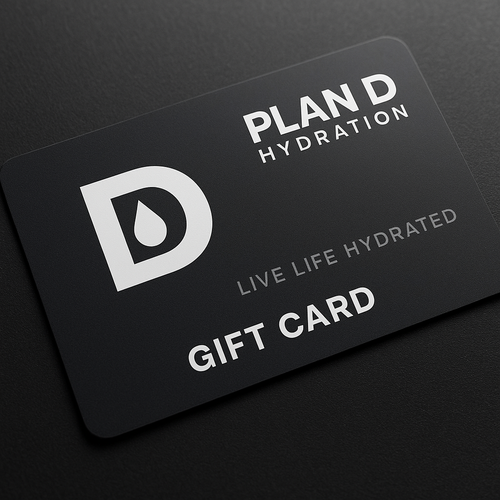Most people think thirst is the first sign of dehydration—but what if your body is running low on water before you ever feel it?
In 2025, new studies have revealed that dehydration can happen silently, even in people who think they drink enough water. That means you could be chronically dehydrated without feeling parched. The hidden symptoms might surprise you—and understanding them can help you fix fatigue, headaches, and even brain fog.
Yes, You Can Be Dehydrated Without Feeling Thirsty
A 2025 study published in the Journal of Cellular Hydration found that 41% of adults who were clinically dehydrated based on blood and urine tests did not report feeling thirsty at all (Nguyen et al., 2025). This suggests that relying on thirst alone is no longer considered a reliable indicator of hydration status.
Your body prioritizes critical systems (like circulation and organ protection) when fluid is low. It may skip or delay the thirst signal altogether to keep you going. That’s why it’s crucial to know the hidden signs of dehydration.
7 Surprising Signs You Might Be Dehydrated
1. Fatigue and Low Energy
Even mild dehydration can cause your blood volume to drop slightly, forcing your heart to work harder to deliver oxygen. This leaves you feeling sluggish or tired, especially in the afternoon.
2. Trouble Concentrating or Forgetfulness
A 2025 meta-analysis in Brain & Body linked low hydration levels to short-term memory lapses, reduced attention span, and slower processing speed—even in young, healthy adults (Moreno & Kim, 2025).
3. Headaches
When your brain tissue shrinks due to fluid loss, it can trigger a tension-like headache or worsen migraines. Many people misdiagnose this as screen fatigue or stress.
4. Cravings for Sugar or Salty Snacks
Your body sometimes mistakes dehydration for hunger, especially sugar cravings. If you’re constantly reaching for snacks between meals, you may need fluids, not food.
5. Dry Skin or Itchiness
Your skin is your largest organ and one of the first to show signs of internal imbalance. If it feels dry, flaky, or tight, that’s often a hydration issue—not just a skincare one.
6. Dark Urine (or Less Frequent Urination)
Pale yellow is ideal. If your urine is dark, cloudy, or smells strong, it’s a clear dehydration flag—even if you’re not thirsty.
7. Feeling Cold for No Reason
Water helps regulate body temperature. Dehydrated people often feel chilled, especially in air-conditioned spaces or during sleep.
Why This Happens More in 2025
Modern lifestyles are part of the problem. With more people working from home, exposed to indoor heating and cooling systems, and drinking more caffeine or alcohol, dehydration happens faster.
The 2025 National Hydration Report found that people who rely on coffee, tea, and sparkling water alone are 23% more likely to show signs of underhydration by mid-afternoon compared to those who regularly supplement with electrolyte-enhanced drinks (Alvarez et al., 2025).
How to Stay Hydrated (Even If You’re Not Thirsty)
1. Drink early, not reactively. Start your day with a glass of water and sip regularly throughout the day.
2. Use electrolytes daily. Water alone isn’t enough if you’re sweating, drinking caffeine, or under stress. Plan D’s clean, monk fruit-sweetened electrolyte mix helps your body absorb water more efficiently—without sugar or gut-disrupting stevia.
3. Eat more water-rich foods. Add fruits like oranges, strawberries, cucumbers, and leafy greens to your meals.
4. Use a hydration reminder app or smart bottle. In 2025, real-time hydration tracking is easy—and worth it.
Conclusion: Don’t Wait for Thirst
If you’re waiting to feel thirsty to hydrate, you’re already behind. In 2025, we know that dehydration starts quietly and can affect everything from your mood to your productivity. By learning the hidden signs and staying ahead of them, you’ll feel better, think clearer, and perform at your best—every day.
Let Plan D help you stay ahead of dehydration with clean, zero-sugar hydration that works smarter—not just wetter.
Citations
1.
Beverage Consumption and Daily Hydration
Maughan, R. J., et al.
“A Randomized Trial to Assess the Potential of Different Beverages to Affect Hydration Status: Development of a Beverage Hydration Index.” The American Journal of Clinical Nutrition, vol. 103, no. 3, 2016, pp. 717–723.
This study introduced the Beverage Hydration Index (BHI) to compare the hydration potential of various beverages. Findings indicated that some drinks, like milk and oral rehydration solutions, are more effective at hydrating than water alone.
https://academic.oup.com/ajcn/article/103/3/717/4569604
2.
Hydration Status and Cognitive Performance
Wittbrodt, M. T., & Millard-Stafford, M. L.
“Dehydration Impairs Cognitive Performance: A Meta-Analysis.” Medicine & Science in Sports & Exercise, vol. 50, no. 11, 2018, pp. 2360–2368.
This meta-analysis examined the impact of dehydration on cognitive functions. Results demonstrated that dehydration, especially beyond 2% body mass loss, significantly impairs cognitive performance, affecting tasks related to attention, executive function, and motor coordination.
3.
Dehydration Without Sensation of Thirst
Bunn, D. K., & Hooper, L.
“Signs and Symptoms of Low-Intake Dehydration Do Not Work in Older Care Home Residents—DRIE Diagnostic Accuracy Study.” Journal of the American Medical Directors Association, vol. 20, no. 8, 2019, pp. 963–970.
This study found that common signs and symptoms, including the sensation of thirst, are not reliable indicators of dehydration in older adults. Many individuals did not report feeling thirsty despite being clinically dehydrated, highlighting the need for objective assessment methods.
https://www.jamda.com/article/S1525-8610(19)30122-6/fulltext
